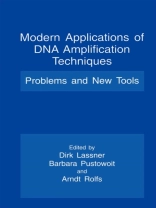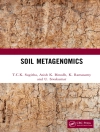In the ten years since the first publication on PCR (Saiki et al. , 1985), this in vitro method of nucleic acid replication and modification has grown to rival in popularity traditional microbiological, genetical und technical procedures for cloning, sequencing, gene detecting and related procedures. To date the PCR literature has emphasized six main areas of application: genetic mapping, detection of mutations, genetic polymorphism, transcriptional splicing and regulation, molecular virology and quantitative procedures. The overwhelming focus of quantification of DNA or RNA by PCR has been on human microbiology and oncological problems. The exquisite sensitivity of PCR gives this method the ability to detect extremely rare DNAs, m RNAs, m RNAs in small numbers of cells or in small amounts of tissue, and m RNAs expressed in mixed-cell populations. However, the exact and accurate quantification of specific nucleic acids in biological samples is in spite of numerous publications in that field still a general problem: during the pe R process, an unknown initial number of target sequences are used as a template from which a large quantity of specific product can be obtained. Although the amount of product formed is easy to determine, it is difficult to deduce the initial copy number of the target molecule because the efficiency of the pe R is largely unknown.
Dirk Lassner & Barbara Pustowoit
Modern Applications of DNA Amplification Techniques [PDF ebook]
Problems and New Tools
Modern Applications of DNA Amplification Techniques [PDF ebook]
Problems and New Tools
Kup ten ebook, a 1 kolejny otrzymasz GRATIS!
Język Angielski ● Format PDF ● ISBN 9781461553793 ● Redaktor Dirk Lassner & Barbara Pustowoit ● Wydawca Springer US ● Opublikowany 2013 ● Do pobrania 3 czasy ● Waluta EUR ● ID 4661553 ● Ochrona przed kopiowaniem Adobe DRM
Wymaga czytnika ebooków obsługującego DRM












